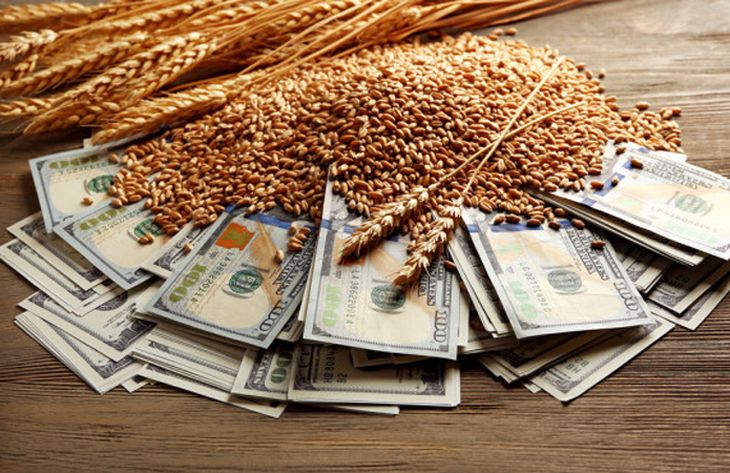Syria’s wheat production ‘lowest in 50 years’ with fears of mass starvation: UN

Syria’s wheat production reached its lowest level in 50 years due to a combination of drought, increasing costs, and worsening economic conditions, a UN report released on Friday said.
A UN Food and Agriculture Organisation (FAO) annual report on food production in Syria showed a decline across the board in 2021. The FAO said that “immediate action is required to support the agricultural sector” for its next season.
The decline in agriculture production comes as Syria suffers from famine-like conditions in parts of the country with over 12.4 million people “food insecure” and around 90 percent of the population living in poverty.
Besides rising prices, the country suffers from severe food shortages and government-run stores meant to provide subsidised goods are often empty.
The cost of the average food basket is about 174,000 Syrian pounds ($54), while the country’s monthly minimum wage is just 71,515 pounds ($22).
This year, the production of cereals such as wheat and barley – staple foodstuffs for impoverished Syrians – particularly suffered.
Despite the Ministry of Agriculture and Agrarian Reform (MAAR) dubbing 2021 “wheat year”, production declined by 63 percent with a yield of 1.05 million tonnes, compared to 2.8 million in 2020.
This is just a quarter of Syria’s pre-war wheat production and far below the amount needed to satisfy domestic demand for cereal products like bread.
Syria’s agricultural sector has suffered a range of factors hitting farmers, chief among them, drought.
This summer saw a punishing drought across the eastern Mediterranean, with rivers and dams drying up in the scorching summer heat.
Not only was this year’s rainfall lower than the historical average, but the timing of rainfall was also “unusual” – a continual trend as climate change takes effect in Syria.
Local farmers said that the rainy season was starting later and ending earlier. Rivers – most notably the Euphrates – slowed to a trickle as Syria’s upstream neighbours used their dams liberally.
Temperatures have also become irregular in Syria, with higher than average temperatures during the day and lower-than-average at night. In March, the FAO reported that daytime temperatures were high, while at night there was still frost on crops.
As a result, just over half of the wheat planted in Syria was harvested, compared to last year, where virtually all of the planted wheat was harvested. Barley, another staple cereal crop, stood at just 10 percent of 2020’s harvest levels.
To make up for the lack of water, farmers turn to private groundwater wells. Many of these wells have been dug illegally and place stress on the country’s aquifers, which are reportedly diminishing. The country’s water infrastructure has been damaged over the course of the year, with only 50 percent of the country’s water and sanitation equipment functioning properly.
To draw water from wells, farmers need diesel to power their pumps, something which is unaffordable to many. Most farmers irrigated their wheat fields between one and three times over the growing season, where the ideal amount should be between six and nine irrigations.
Aging equipment – some tractors used by farmers were over 30 years old – also limited the productivity of farmers. Those who did not have their own farming equipment or could not afford to rent tractors turned to animal-driven tools such as horse-drawn plows.
Rising prices of inputs, such as fertilisers and herbicides, also harmed yield potential. In the past, Syria produced its own fertiliser, but its main factory in Homs province was damaged in 2017.
Syria’s foreign currency crunch and Western sanctions make buying fertilizer and other agricultural inputs from abroad difficult. This year Syria imported no fertilizer at all.
With the year’s dreary harvest, Syria is left with a wheat deficit of almost two million tons. In the past, Damascus has attempted to stem this ever-widening deficit with wheat imports – mainly from Russia.
Russia has reportedly exported a million tons of wheat to Syria in 2021, an increase from last year when Moscow halted some exports over Covid-driven supply chain concerns.
In 2020, Damascus faced difficulties in finding willing wheat exporters to the country, issuing several tenders which went unfulfilled.
The regime has largely blamed a Western-led “blockade” and corrupt businessmen for its widespread shortages. Analysts, by contrast, typically point to its foreign currency crunch and rampant corruption as more relevant causes for the country’s empty shelves.
Read also
Wheat in Southern Brazil Impacted by Dry Weather and Frosts
Oilseed Industry. Leaders and Strategies in the Times of a Great Change
Black Sea & Danube Region: Oilseed and Vegoil Markets Within Ongoing Transfor...
Serbia. The drought will cause extremely high losses for farmers this year
2023/24 Safrinha Corn in Brazil 91% Harvested
Write to us
Our manager will contact you soon



